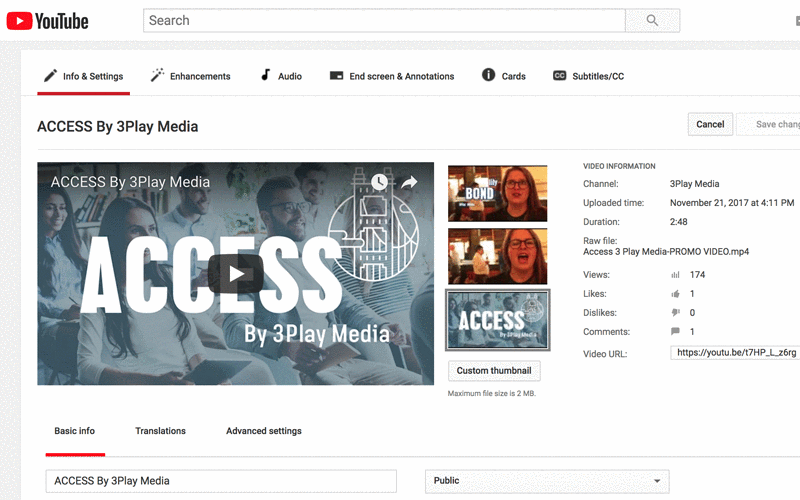
Video
is everywhere and this is both a blessing and a curse, especially if you’re
trying to stand out from the rest of the crowd at the top of SERPs.
Video
content has skyrocketed over the past few years, and therefore it’s time to
examine how adding SEO to your videos can impact rankings.
Video is everywhere and
this is both a blessing and a curse, especially if you’re trying to stand out
from the rest of the crowd at the top of search engine results pages. So
consider the following video SEO tips to help put you ahead of the competition…

Add value

Host video to your own domain
If
you are creating video content to improve the ranking of your site, then you
need to host the video to your own domain, in order to ensure that search
engines don’t direct the traffic to another site.
Let’s
say for example that you prefer to upload the video on YouTube and add a link
back to your site in the description. This may be a good idea if you’re trying
to expand your reach, but in terms of SEO, search engines will crawl the YouTube
video first, rather than your site.
Moreover, it may be a good
idea to create a new page for each video, as Google mentions that this makes
the indexing easier.

Create interactive content
How
about adding the necessary interactive elements to your videos to activate the
viewers? Whether it’s the actual content, an annotation, or the caption, there
are many ways that you can “gamify” a video to make it more interactive and
engaging, helping grab the users’ attention.
You can even split the
video into shorter clips, allowing your viewers to pick which one they prefer
to watch, a strategy which has been implemented in many successful campaigns.

Create relevant metadata
Your
video should provide the necessary details to help search engines index it and
according to Google, the title, the description and the thumbnail are the most
important pieces of information.
Metadata
offers more details about the video title, the description, the length of the
video and its file name.
Video
title has to be short and concise, while the description may provide more
details and keywords, boosting the ranking of your content.
Last but not least, make
sure the file name of your video is relevant, instead of a generic one like
“video415.mph”, as this is another way to describe your content for search
engines.

Optimize with keywords
Keyword
research may also occur in video SEO and it may help you discover the most
relevant content for your target audience. Is there a particular keyword, or
phrase that could lead to better results? What’s the best way to describe your
video?
Feel free to experiment
with different keywords and always remember to create descriptive, but also
legible content, helping both your audience, but also the search engines.

Focus on the thumbnail
The
video’s thumbnail is among the first things that users will notice and it might
affect their decision whether they’ll actually click on the video.

Make “shareable” content
It’s
not just about creating an interactive video, it’s also about producing content
that your audience will appreciate.
“Shareable”
content is unique, creative and adds value for its target audience, making the
sharing easier and the reach bigger.
It’s the quality of your content that will make your video stand out from the rest, and a clear call-to-action may also affect your site’s authority, with new links and mentions.

Add a video transcript
A
full video transcript is the written version of your video and it can be very
useful if it also includes the right use of keywords, helping search engines
learn more about your content.
You can either include a
transcript to the audio portion of your video, or you may also add it to the
description box, along with the HTML of the page. This not only helps search
engines to discover your content, but also the readers who may prefer an
overview of your video.

Create a video sitemap
A
video sitemap provides all the necessary data about your video’s content and it
provides the details the search engines need to get a clearer picture of its
context.
A
video’s sitemap is another way to present the video’s title, description,
subject, duration and it may even provide more specific details, like an
indication of the country restrictions, any expiration dates, platform
restrictions or live streams.
It serves as an extension
to your site’s general sitemap and although it may often be overlooked in video
SEO, it is an important step to help your video’s ranking.

Repurpose video
There
are many ways to use an existing video and this may extend its “lifespan” and
its reach.
For
example, you may create a 10-minute video on your site, offering tips about
video SEO. Your goal is to push this page to the rankings and increase the
awareness and the traffic to your site.
Instead
of simply promoting the particular page, which you should do anyway, you may
also upload a preview of this video to your Facebook page for example, leading
your audience to your site for more details.
Moreover,
you can create an infographic, a slideshow, or shorter videos, all leading to
the main source of content: your site.
It is a great opportunity
to reach a wider audience and promote your main content, helping them discover
your page in the most interesting and relevant way.

Allow embedding of your video
If
users want to embed your video to their site, or their blog, it means that they
like it enough to include it on their page. This is already a win for your
content and it may lead to a boosted page ranking on SERPs.
Thus, make it easy for your
audience to embed your video, as you’re earning more inbound links to help your
SEO efforts.

Share on social media
Don’t
be afraid to promote your content as much as possible to all the relevant
channels, as this is the best way to spread word about it and reach the right
audience.
This
may lead to more viewers, new links, bigger traffic and of course, better
positioning on SERPs.
Feel
free to reach the right people that may find your content interesting, or even
to use your network to promote it accordingly. Even paid promotion may be
useful, if you think that this can contribute to your goals.
Social authority cannot be
overlooked and in fact, it may be a great way to boost your video’s SEO
efforts.

Takeaway
There
are numerous ways to apply search optimization for your video content, but it
all comes down to quality once again, as the starting point for your strategy.
It’s
the actual content that will grab the audience’s attention and its optimization
can ensure that you are rewarded for your dedication with a higher position on
SERPs.
Once you are creating
relevant content of high quality, then it’s time to start applying the above
tips to get your message noticed, both by users and search engines.










0 comments:
Post a Comment